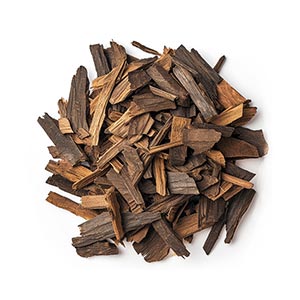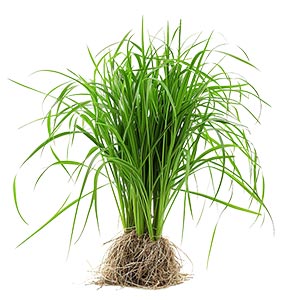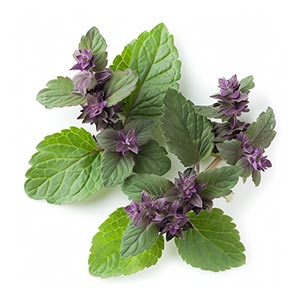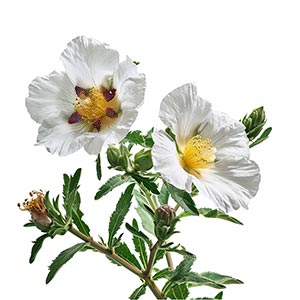The Leather fragrance family is distinguished by its rich, deep scents that mimic the aroma of new, treated leather. This family incorporates smoky, woody, and animalic notes to evoke the essence of leather goods like jackets, boots, and saddles. Leather fragrances are complex and nuanced, often blending with spicy, woody, or floral notes to create sophisticated scents.
fragrances capture the essence of leather's warmth and texture. These scents are known for their bold and distinctive character, offering a sense of luxury and tradition. They are favored for their depth and longevity, making a powerful statement that is both refined and assertive.
The term "leather fragrance" itself likely originated from the Spanish word "cuir," with one of the earliest and most iconic examples being "Cuir de Russie" (Russian Leather). This scent, inspired by the smoky, woody aroma of birch tar-treated Russian leather boots, set a precedent in the early 20th century for perfumers aiming to replicate the essence of treated leather. The development of leather fragrances has since moved beyond merely masking odors to become a refined and cherished category within perfumery. Modern leather scents are crafted using natural ingredients like birch, juniper, and cade oils or synthetic compounds to replicate leather's warm, rich, and smoky qualities.
Today's leather fragrances encompass a range from raw and animalistic to smooth and refined, blending with other notes to evoke warmth, sensuality, and luxury. This evolution reflects their appreciated depth, complexity, and the unique ability to conjure images of tradition, luxury, and the untamed aspects of nature. Leather scents remain a symbol of sophistication and edge, offering an olfactory journey that celebrates both the material's rich history and its enduring presence in the world of fragrance.
fragrances capture the essence of leather's warmth and texture. These scents are known for their bold and distinctive character, offering a sense of luxury and tradition. They are favored for their depth and longevity, making a powerful statement that is both refined and assertive.
History
The history of leather fragrances and perfumes is a testament to the blend of practicality and luxury that defines human culture. Dating back to ancient civilizations, the aromatic treatment of leather with oils and spices was practiced by the Egyptians, who were pioneers in using scents for both embalming and creating pleasantly scented articles. This early use of scented materials was not only for pleasure but also served practical purposes, such as preserving the leather and denoting status. The unpleasantness of the tanning process in the Middle Ages, often involving animal urine and dung, led to the perfuming of leather goods with lavender, rose, and jasmine, especially in France where scented gloves became a symbol of nobility and wealth in the 16th century.The term "leather fragrance" itself likely originated from the Spanish word "cuir," with one of the earliest and most iconic examples being "Cuir de Russie" (Russian Leather). This scent, inspired by the smoky, woody aroma of birch tar-treated Russian leather boots, set a precedent in the early 20th century for perfumers aiming to replicate the essence of treated leather. The development of leather fragrances has since moved beyond merely masking odors to become a refined and cherished category within perfumery. Modern leather scents are crafted using natural ingredients like birch, juniper, and cade oils or synthetic compounds to replicate leather's warm, rich, and smoky qualities.
Today's leather fragrances encompass a range from raw and animalistic to smooth and refined, blending with other notes to evoke warmth, sensuality, and luxury. This evolution reflects their appreciated depth, complexity, and the unique ability to conjure images of tradition, luxury, and the untamed aspects of nature. Leather scents remain a symbol of sophistication and edge, offering an olfactory journey that celebrates both the material's rich history and its enduring presence in the world of fragrance.

Evocative Nature & when to wear
Leather fragrances evoke a sense of strength, tradition, and luxury. They are often associated with the imagery of libraries, vintage cars, and equestrian sports, embodying a timeless elegance. These scents are particularly appealing for evening wear or formal occasions, where their rich and assertive character can be fully appreciated.Leather fragrances are best worn when you want to project confidence, sophistication, or an air of mystery. Their unique profile makes them suitable for occasions that call for a distinctive and memorable scent.
Evening and Formal Events: Leather scents, with their sophisticated and often luxurious profile, are well-suited for formal occasions and evening events. They add a touch of elegance and depth, complementing formal wear with their distinct and mature character.
Autumn and Winter: The warmth and richness of leather fragrances make them ideal for cooler months. They provide a comforting warmth and depth that pairs well with the heavier clothing and the mood of the season.
Casual and Edgy Outfits: Leather scents can also complement casual, edgy fashion styles. Wearing a leather fragrance with a leather jacket or boots, for example, can enhance the overall impact of a rugged, stylish look.
Professional and Business Settings: In a professional or business setting, a subtle leather fragrance can convey confidence and sophistication. It’s a scent that suggests strength and reliability, making it suitable for meetings and everyday office wear.

Characteristics of Leather Fragrances
Leather fragrances captivate with their rich, smoky, and often animalistic qualities, reminiscent of natural leather. This fragrance family draws its inspiration from the scent of tanned leather, evoking images of elegance, tradition, and ruggedness. The classic Leather structure typically unfolds as follows:Top Notes: Often include citrus or aromatic herbs to introduce a sharp, fresh opening, setting the stage for the deeper leather heart. These initial notes may include bergamot, lavender, or thyme, offering a bright contrast to the richness that follows.
Heart Notes: The core of Leather fragrances features the deep, warm essence of leather itself, complemented by floral or spicy accents such as jasmine, rose, or cinnamon. This layer captures the essence of soft suede, luxurious leather goods, or the smokiness of birch tar, embodying the fragrance's central theme.
Base Notes: Grounded in rich, earthy elements like amber, woods, and musk, the base notes enhance the leathery heart and add depth and longevity to the scent. Ingredients such as patchouli, oakmoss, or vanilla may be used to round out the fragrance, providing a smooth, enduring finish.
Main Components and Notes of Leather Fragrances
Birch Tar: Provides a smoky note, reminiscent of the tanning process.Leather Accord: A combination of ingredients designed to recreate the multifaceted scent of leather.
Oud and Woods: Add depth and richness to the leather base.
Spices and Herbs: Contribute to the complexity and sophistication of the scent.

Birch is used in perfumery for its rich, leathery, and smoky scent, often found in masculine or unisex fragrances.

Tobacco is utilized in fragrances for its rich, deep aroma, adding warmth, depth, and a hint of sweetness to create bold and complex scents.

Cade Oil imparts a unique, smoky, and leathery aroma to perfumes, adding depth and intensity to fragrance compositions.

Saffron imparts a luxurious and sophisticated aroma to fragrances, adding warmth, earthiness, and a hint of floral sharpness.

Oud, a luxurious and complex ingredient, adds a deep, warm, and uniquely woody aroma to fragrances.

A creamy and warm fragrance that is versatile and blends well with diverse fragrance ingredients such as florals, woods and spices.

Vetiver is known for its unique, earthy and woody aroma, often used as a base note in fragrances for its strong fixative properties.

Amber has a rich and sweet smell that evokes warmth, sensuality and sophistication. Often used in oriental perfumes.
Popular Leather Fragrances
Women's Fragrances
Tuscan Leather by Tom FordA luxurious fragrance that blends saffron, raspberry, and thyme, laying on leather and suede for a powerful, opulent scent.
Bottega Veneta by Bottega Veneta
A floral chypre with notes of bergamot, patchouli, and oakmoss, enveloped in a rich leather accord.
Cuir Beluga by Guerlain
Part of the exclusive L'Art et la Matiere collection, a smooth blend of mandarin, vanilla, leather, and amber.
Gold Leather by Atelier Cologne
A warm and spicy fragrance, featuring saffron, plum, and oud, underlined by a base of leather.
Cuir de Russie by Chanel
An elegant and rich blend of orange blossom, tobacco, and leather, inspired by the Russian imperial era.
Men's Fragrances
Royal Oud by CreedA luxurious blend of oud, sandalwood, and cedar, with a touch of leather for a regal and sophisticated scent.
Colonia Leather by Acqua di Parma
An aromatic expression of citrus top notes with a warm leather heart and a woody, aromatic finish.
Terre d'Hermès by Hermès
While primarily woody and mineral, it has a distinct leather undertone, blending orange, vetiver, and cedar.
Fahrenheit by Christian Dior
A classic and bold fragrance with a harmonious blend of violet, leather, and woody notes, creating a unique and distinctive scent.
Armani Code Profumo by Giorgio Armani
Warm and intense, this fragrance combines green mandarin and cardamom with a leather and amber accord.




